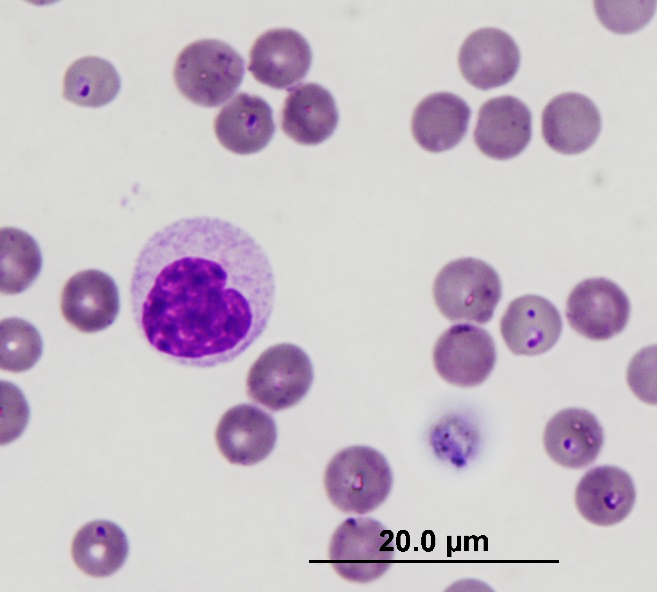Cytauxzoon
(Cytauxzoon felis)
Cytauxzoon felis is tick-borne apicomplexan parasite that infects wild and domestic felids. It can cause severe, often fatal disease in domestic cats.
Distribution
Cytauxzoon felis is mainly reported from North and South America. However, infections by an apparently different (yet unnamed) species of Cytauxzoon have been reported in domestic cats from several European countries [1]. This species is phylogenetically close to Cytauxzoon manul, which infects the Pallas cat (Otocolobus manul) in Mongolia.
Clinical signs
Cytauxzoon felis infections produce an acute or peracute febrile disease in cats or may be asymptomatic. The most frequent clinical manifestations are lethargy, anorexia, high fever, icterus, dyspnoea, tachycardia, generalised pain and vocalisation. Pale mucous membranes, pigmenturia, splenomegaly and hepatomegaly are also frequent. Neurological signs such as ataxia, seizures, and nystagmus may be seen in the late stage of the disease. Cats may be hypothermic, moribund and enter into coma. Death may occur 1 week after onset of clinical signs. Most Cytauxzoon-infected cats in Europe are asymptomatic, suggesting that the parasite species circulating among European felids is less virulent than C. felis [1].

Figure 1. Cytauxzoon felis trophozoites in a blood smear of a cat (Photo credit: Dr. P. Irwin)
Diagnosis
Cytauxzoon spp. infections can be confirmed by cytological examination of blood smears and/or fine-needle aspirates from the liver, spleen and lymph nodes using rapid Romanowsky-type stains (Fig. 1). It is not possible to determine the species visually (although local knowledge is helpful). Reliable speciation of piroplasms requires molecular tools. The differential diagnoses for such inclusions are Babesia felis and Theileria spp. (both piroplasms), and haemotropic Mycoplasma species. PCR assays (conventional and quantitative) are also available and may be useful to detect low-level parasitaemia.
Treatment
Different antiprotozoal drugs have been used in case reports or experimental studies, but their efficacy is limited. The combination of atovaquone (15 mg/kg PO q8h) and azithromycin (10 mg/kg PO SID) was more effective as compared with imidocarb (3.5 mg/kg IM once) in 80 cats with acute disease [2]. Supportive therapy and care are of paramount importance to keep treated cats alive. The prognosis is usually more favourable in cats with lower parasitaemia.
Prevention and Control
Prevention or reduction of exposure to tick vectors by utilisation of long-acting registered acaricidal products (topical solutions, collars) with repel and kill activity and keeping cats indoors to avoid fighting. Blood donors should be tested (by PCR) to rule out Cytauxzoon spp. infection.
Public health considerations
None.
References
[1] Lloret A, Addie DD, Boucraut-Baralon C, Egberink H, Frymus T, Gruffydd-Jones T, Hartmann K, Horzinek MC, Hosie MJ, Lutz H, Marsilio F, Pennisi MG, Radford AD, Thiry E, Truyen U, Möstl K. European Advisory Board on Cat Diseases. Cytauxzoonosis in cats: ABCD guidelines on prevention and management. J Feline Med Surg. 2015;17:637-641.
[2] Cohn LA, Birkenheuer AJ, Brunker JD, Ratcliff ER, Craig AW. Efficacy of atovaquone and azithromycin or imidocarb dipropionate in cats with acute cytauxzoonosis. J Vet Intern Med. 2011;25:55-60.
